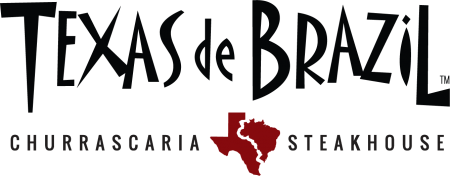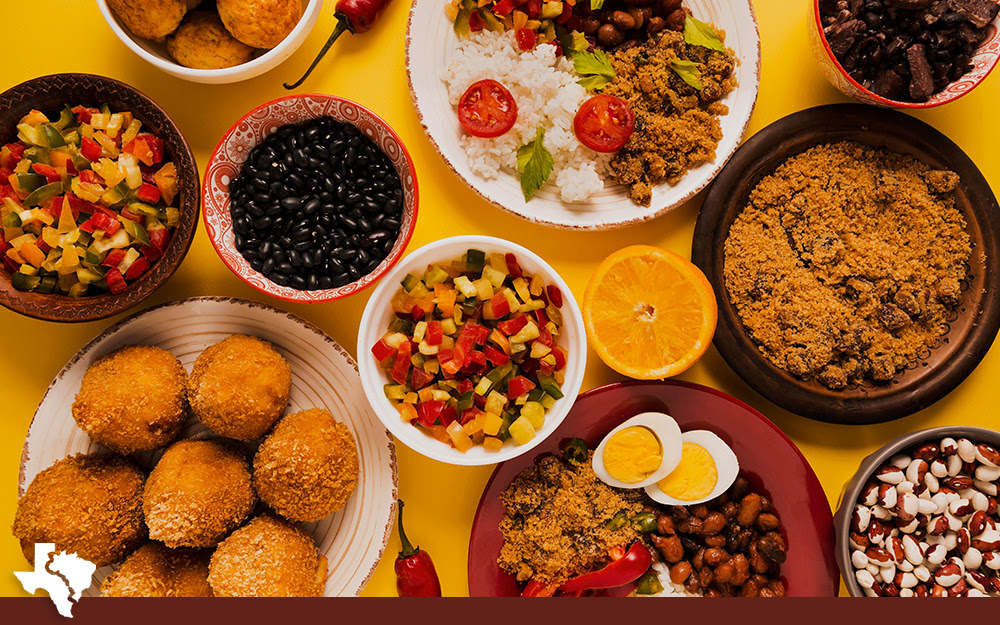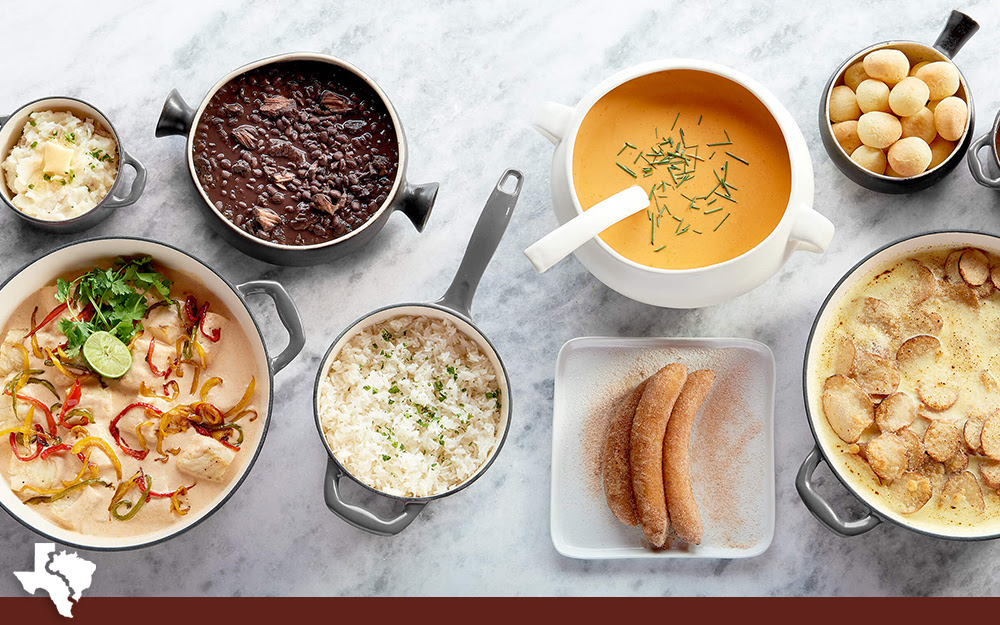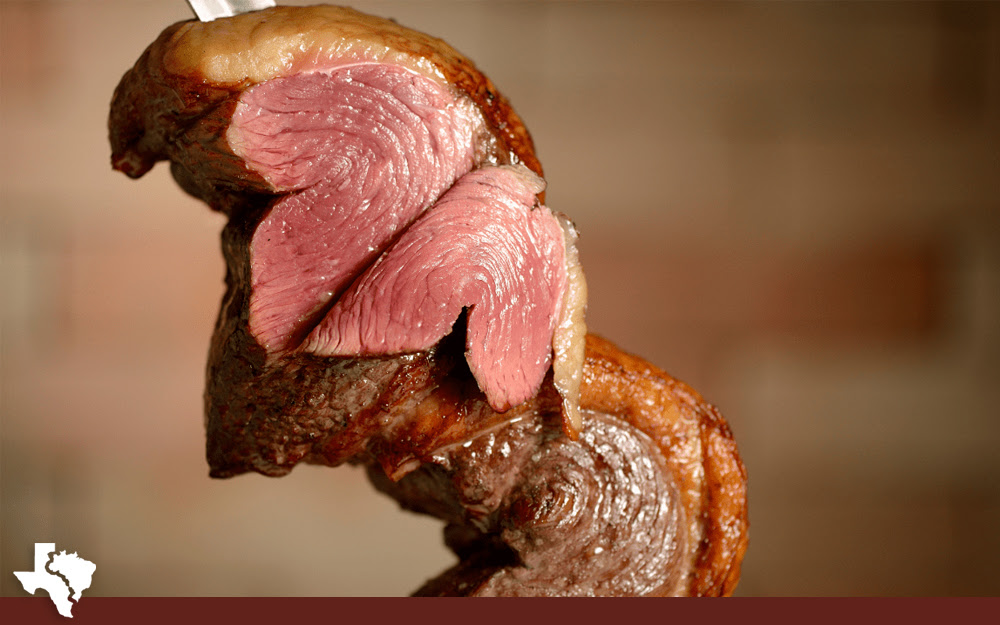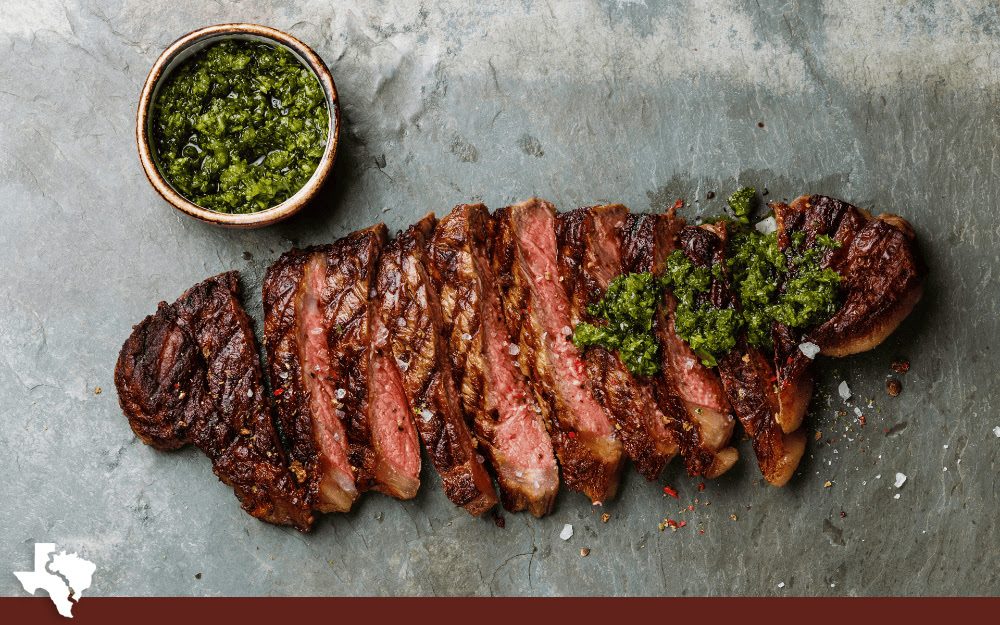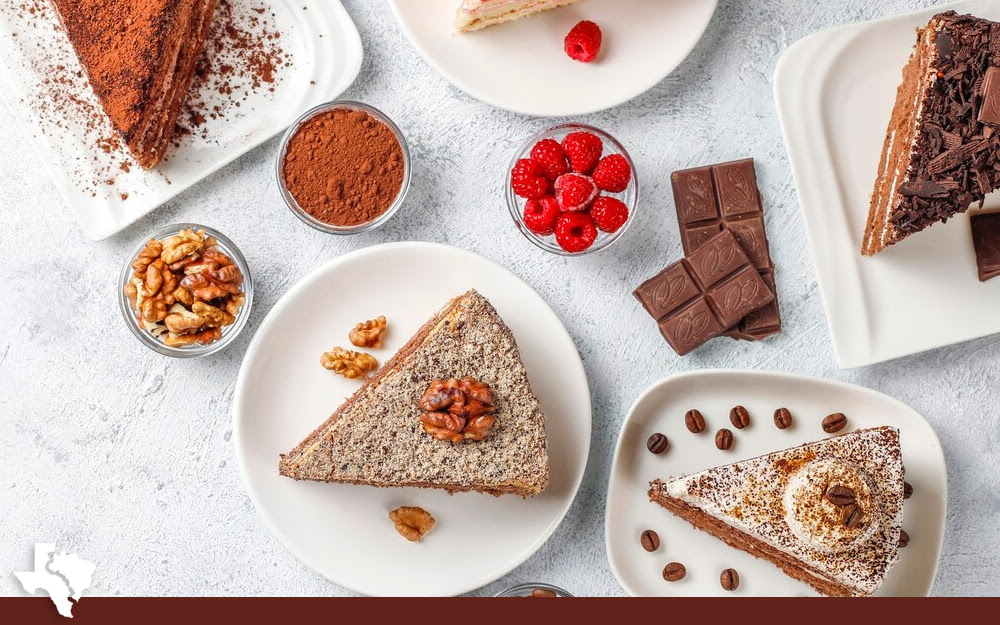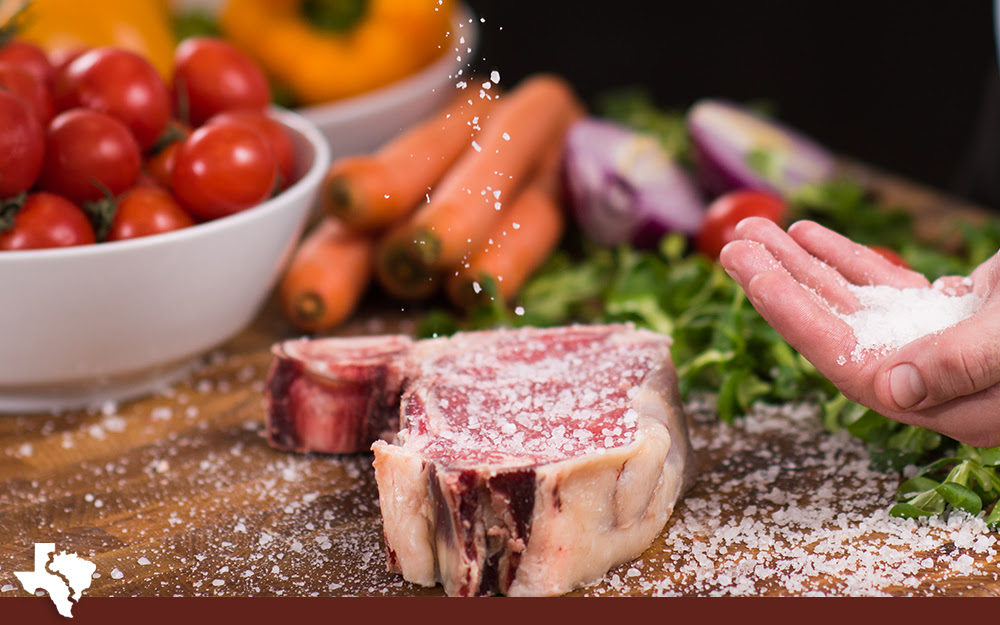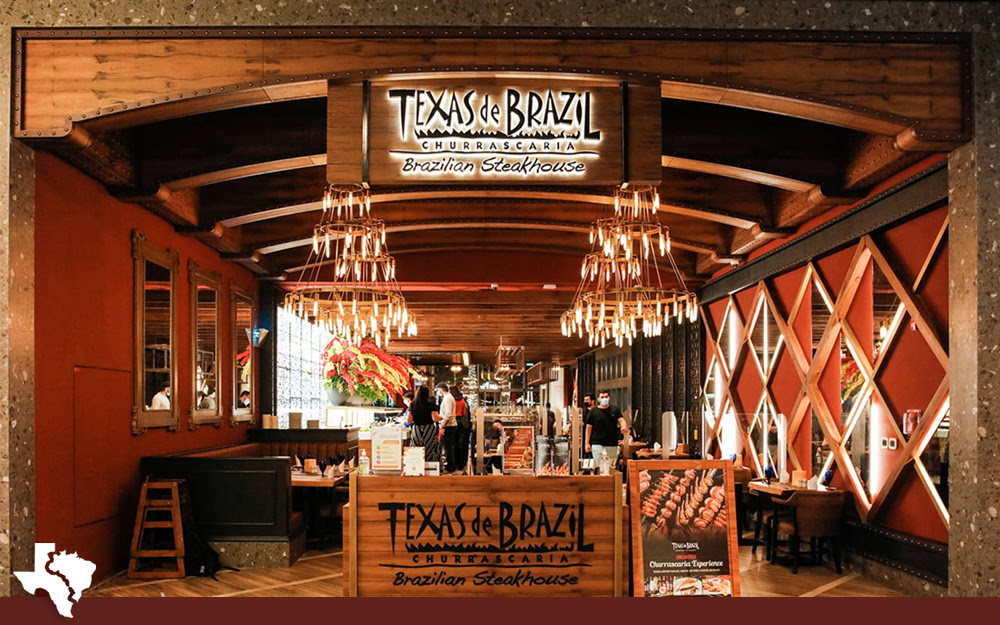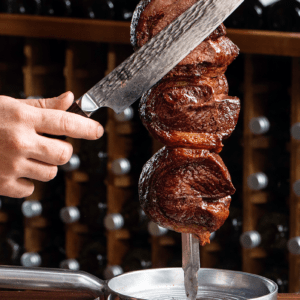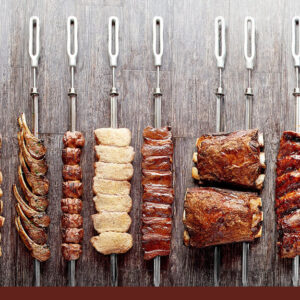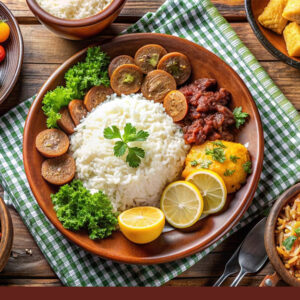The Health Benefits of Brazilian Cuisine: A Delicious Surprise
When you think of healthy diets, what comes to mind? Mediterranean food is always near the top, of course. Fad diets like Keto and Atkins always come up. You might have heard of things like “Low FODMAP” before or similar terms.
One that you don’t often hear is Brazilian cuisine. Why is that?
Well, some of it has to do with being in the global south, which is frequently ignored or overlooked. There’s a distressing tendency to group everything from Mexico downwards into the same broadly Spanish-adjacent cuisine and leave it at that. But truthfully, Brazilian cuisine is a land of contrasts!
It can be difficult to stay healthy when you start your day off with a cake-like white bread and end it with a literal cake. But then, that’s like saying that the American diet is unhealthy because you can do the same thing.
There’s a lot to love about Brazilian cuisine, and at Texas de Brazil, our goal is to bring the best parts to your table!
Table of Contents
The Top Benefits of Brazilian Cuisine
Brazil is a land that has been heavily influenced by other cultures all throughout history, from colonization onwards. Modern Brazilian cuisine is sort of like a mix of European, African, and Amerindian cuisines, all of which are frequently regarded as some of the healthier – in broad strokes – options from around the world.
But what makes Brazilian food healthier than your average regional cuisine? Here are some of the major benefits.
Brazilian Food is Generally High in Fiber
Dietary fiber is an incredibly important part of a healthy diet. Fiber is a huge part of several bodily processes, ranging from the macro-level digestion to microbiological growth in the gut.
While many people don’t often like to think of their bodies being full of bacteria, it’s true. The gut microbiome is an array of bacteria living in your digestive system, largely in the intestines. It’s not an infection; rather, these microbes are almost symbiotic in how they benefit humanity. The so-called “good bacteria” in the gut help break down foods, especially dietary fiber. They consume their own nutrients, of course, but the remnants are things like vitamins, minerals, and amino acids that you would otherwise have a harder time getting from your food.
There are two critical benefits to this process.
- The first is that the presence of fiber helps keep the bowels moving. Getting enough dietary fiber keeps bowel movements regular, which makes sure that waste products, toxins, and other nastiness is cleared out of your system faster. It’s almost like a natural detox!
- The second is that the presence of good bacteria out-competes the bad bacteria. Bad bacteria also live in your gut – it’s impossible to fully get rid of them, and they’re so common that they’d come right back along with other things you eat – and you really don’t want them to thrive. Bad bacteria can range from minor causes of stomach upset all the way to illnesses like E. Coli and Salmonella. But (and here’s the critical point) most of these bad bacteria thrive on sugar. When your diet is lower in sugar and higher in fiber, the good bacteria out-compete the bad, so the bad bacteria can’t grow to the point where they cause problems.
Dietary fiber also has a bunch of other benefits to the body as well. It helps lower cholesterol levels, which are important for keeping cardiovascular health strong. It also helps regulate blood sugar, reducing the chances of diabetes.
All of this, just from one macronutrient that is widely present in Brazilian cuisine. It’s great! What’s next?
Brazilian Food is Low in Bad Fats
This one is tricky to discuss without acknowledging decades of misinformation in American dietary culture.
For a very long time, Americans have been told that fat is bad for you. Low-fat products stand proudly next to their full-fat counterparts on store shelves, alternatives to fats in food are everywhere, and fat has become a boogeyman for an entire generation.
There’s some truth to this! The trick is that there are several different kinds of dietary fats. Some of them are bad for you, causing clogged arteries and a whole host of diseases and illnesses when you consume too many of them for too long.
Other fats, though, are actually good for you. Fat is a category of macronutrients, and the truth is that your body needs some amount of fats in order to survive.
Healthy fats are often considered to come from plant-based sources, like walnuts, soybeans, and avocados. They’re also present in other foods, as well, including red meats. And if there’s one thing you probably know about Brazilian cuisine and culture, it’s that we love ourselves some good red meats. You’re on the blog for a steakhouse, after all!
But wait. Aren’t red meats full of bad fats? Well, sort of. The truth is, yes, fatty cuts of red meats can be full of the “bad” fats we’re so often worried about. At the same time, though, there are three factors that make this not nearly as much of a problem as you might think.
- A little bit of fat isn’t bad for you. Even the “bad” fats are a problem more because people eat large amounts of them every day. Now, if you’re having lunch at our restaurant every single day, then maybe you’re going to have a problem (not that we agree), but for normal, moderate consumption, it’s not all that bad.
- Often, Brazilian meats are either lean themselves, like flank steak, or they’re reliant on a fat cap, like our favorite Picanha. Picanha is lean meat and a fat cap that cooks alongside it, saturating it with delicious flavor while leaving the fattiest bits aside.
- It might not even be that bad for you! The common wisdom was that dietary fats are bad for you, but the actually-studied scientific links are thin and muddled, and it’s just as likely it’s about how the fat is processed in ingredients like corn oil than in natural sources like meat. Humans evolved to eat meat, after all. In truth, the association between saturated fat and heart disease is much weaker than originally thought.
All of this means that your favorite cuts of meat from a churrasco (that is, a Brazilian steakhouse like Texas de Brazil) aren’t going to be the end of you. Some of them may even be somewhat beneficial to eat!
Red Meats are Rich in Other Nutrients
People are always talking about the fat content of red meat, but what about lean protein? Lean protein is an incredibly important nutrient. It gives your body energy that lasts longer and “burns cleaner” than sugar-based energy, leaving you feeling happier and healthier when you use it.
You also get a ton of beneficial micronutrients, like:
- Choline
- Niacin
- Vitamin B12
- Phosphorus
- Selenium
- Zinc
Micronutrients are easy to overlook, but they’re critical to a healthy diet. Without enough of them, different kinds of bodily processes can start to break down or function incorrectly, and that includes everything from neurological activity to kidney function and more.
Now, you’re not likely to end up deficient unless you’re rigidly following a very specific diet, and if you are, you’re probably working with a nutritionist who can help balance that out or give you supplements to make up for it. We’re definitely not trying to tell you that you’ll end up ill if you don’t follow the Brazilian diet!
Of course, if you are following a specific diet, like Keto, the delicious cuts of meat you can find at a good churrasco will fit right in. When you’re trying to stay low on carbs, higher on fat, and moderate on protein, you can get all of that perfectly from the meats you get at a restaurant like Texas de Brazil.
Obviously, you aren’t likely to be visiting our restaurant every single day for your dietary needs. If you are, well, we welcome you! But, if you just want to take advantage of the delicious cuts of meat without needing to spend time in the restaurant, you can buy the meats directly from our butcher shop.
Are There Brazilian Dishes to Avoid?
Well, that depends! Every cuisine has its good foods and its “bad” or higher calorie foods. Even the Mediterranean cuisine has its pitfalls. Brazilian cuisine is no different.
One of the highest calorie parts of Brazilian cuisine, at least in Brazil itself, is our love of a good cake. Cakes and cake-like breads are a staple of everything from breakfast to dessert, and they’re a common snack, which is a major contributing factor to the obesity epidemic plaguing both the country and the rest of the world.
Of course, that’s nothing new; here in America, so many foods are laced with excess sugar that they may as well be cake, right?
Truly, though, the key to any diet is moderation. If you’re doing nothing but eating cake all day, you’re going to run into problems. The same is true if you’re doing nothing but eating leafy greens. Even the vegan diet needs support and supplements to stay healthy.
Brazilian Nutritional Guidelines
One thing that sets Brazil apart from the rest of the world is our approach to nutritional guidance. Take America for a familiar example. You’ve definitely seen the food pyramid before, and lists of good foods versus bad foods. American dietary guidelines end up being a massive rulebook of what’s good, what’s bad, and what to avoid. While there are nuggets of wisdom and suggestions of balance, they’re lost in the lists.
Brazilian food guidelines are much more holistic and focused on patterns and habits, not on punishment. Eating – even eating unhealthy ingredients – is part of living life. Since moderation is the key to all things, it’s heavily emphasized in Brazilian food guidance.
For example, here are a couple of excerpts from the Brazilian food guidelines.
- “Make natural or minimally processed foods the basis of your diet. Natural or minimally processed foods, in great variety, mainly of plant origin, are the basis for diets that are nutritious, delicious, appropriate, and supportive of socially and environmentally sustainable food systems.”
- “Use oils, fats, salt, and sugar in small amounts for seasoning and cooking foods and to create culinary preparations. As longas they are used in moderation in culinary preparations based on natural or minimally processed foods, oils, fats, salt, and sugar contribute toward diverse and delicious diets without rendering them nutritionally unbalanced.”
At a churrasco like Texas de Brazil, it might not feel like moderation is central, but it truly is. With a huge variety of small portions of different foods, from the meat that’s the star of the show to the salad bar and sides we offer to every diner, you’re able to find a wide variety of small portions of healthy (and occasionally unhealthy) food items. Fat, salt, oil, and sugar are used, at most, as seasonings for various foods, most of which are centered around a given ingredient and made to shine.
Where to Experience Brazilian Cuisine
While the best place to experience Brazilian cuisine is, of course, Brazil, you can also have a great time here in America. At Texas de Brazil, we’re present all across the country and around the world, so there’s bound to be a location somewhere nearby.
So, why not make a reservation and stop by for an unforgettable experience? Our gauchos are here to serve – quite literally – and our unique culinary experience will leave you with memories of a delicious and exciting meal. Make a reservation or order to-go; it’s up to you!
Meanwhile, you can join our eClub for exclusive deals and bonuses you can’t get anywhere else. If you’re not sure, why not book a special event or catering from Texas de Brazil to give us a try and make your special event memorable?
Once you’re hooked, don’t forget that you can get most of our delectable cuts of meat directly from our butcher shop. Our kitchen shop also has everything you need to enjoy our cuisine at home, too.
